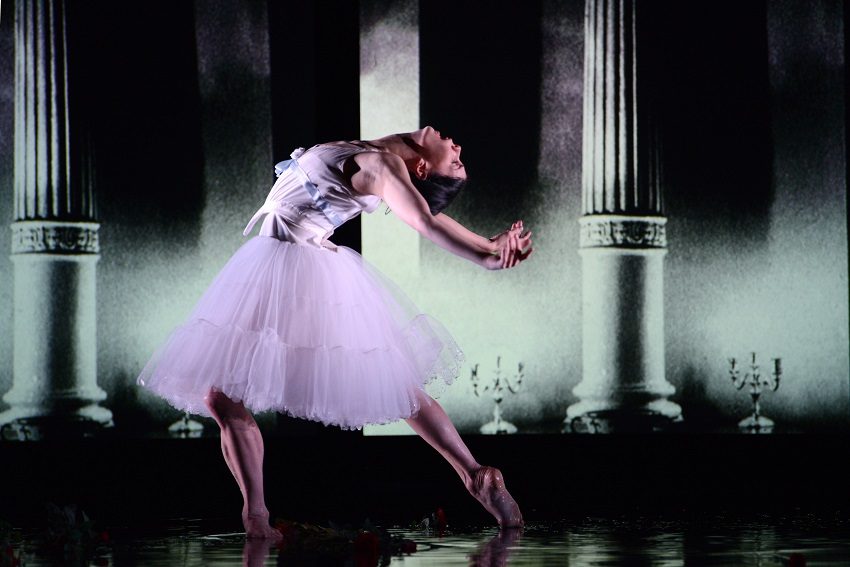Review: Two Feet

Put together three geniuses of dance, one long gone, two very much alive, and you can achieve something spectacular.
Olga Spessivtzeva was a great Russian ballerina, a star of the Mariinsky, Diaghileff and Paris Opéra companies, who suffered from depression, had a nervous breakdown in 1934 while on tour in Sydney with the Dandré-Levitoff company, and after periods in mental hospitals in America died in 1991. Her story fascinated Australian dancer and choreographer Meryl Tankard, who created Two Feet, a solo work for herself, for the 1988 Brisbane Expo, and has appeared in it several times since. Spessivitzeva became obsessed with the role of Giselle, a tragic heroine who goes mad and dies when betrayed by her lover. Tankard has now recreated this compelling work for a great Giselle of today (some say the greatest), Natalia Osipova, star of the Bolshoi and now a principal of the Royal Ballet. It is the first time anyone other than Tankard has danced the piece.
Her own obsession with dance and training led to her identifying with Spessivitzeva, and creating the character Mepsie (her own name when she was little), who appears mainly in in Act 1. In a series of vignettes, some of them too long, she is shown teaching herself from a book, doing barre exercises, learning a tango from Arthur Murray’s instructions, developing into a mature dancer, working at the barre, suffering under a cruel teacher, becoming the betrayed Giselle and the sacrificial virgin in The Rite of Spring.
The shorter Act 2 opens with Osipova in a blue evening dress, in a modern dance to Handel’s Largo. Bare feet, fluent arm movements and precise body movements are reminiscent of Isadora Duncan’s pioneering choreography in the early 20th century. By stark contrast, in the next scene, “Christmas Dinner”,
Mepsie, in bright green, lays a party table, brings in food, eats some, dislikes it, vomits, takes pills, weighs herself and plays with a balloon till it bursts. Tankard has said that that the scene is about a ballet school or company’s “whole obsession [being] food” and, presumably, overeating, anorexia and bulimia. But while somewhat amusing, the episode jars, and could well be dispensed with. A tribute to Pavlova’s “Dragonfly” follows, and the stage is gradually covered with water, symbolic perhaps of Olga’s failing mentality. She begins her last barre exercises, but is drawn into Giselle’s mad scene. Several times she falls, rises, reaches the barre, collapses, rises again. She begins turning and turning until she falls a last time.
While it tantalizes to see only parts of Osipova’s Giselle, Two Feet shows her wide dramatic versatility, portraying the child Mepsie, often with much comedy, through to the demented Olga. The ballerina’s gradually developing stress is reflected in Osipova’s facial expression, becoming more anguished with each barre exercise. And the exercises themselves have an inspiring beauty of their own.
The music, much of it arranged and played by pianist Nigel Gaynor, Queensland Ballet’s music director and principal conductor, gives accurate support throughout and Regis Lansac’s photographs, forming the backdrop, are integral to the work. Lansac’s photography also features in an Adelaide Festival Theatre foyer exhibition which includes costumes from the original production.
Two Feet was performed at the Dunstan Playhouse on Friday, March 1
Two Feet
Dunstan Playhouse
Friday, March 1 – Tuesday, March 5
adelaidefestival.com.au
Header image:
Regis Lansac